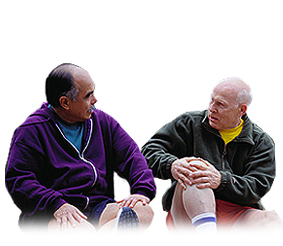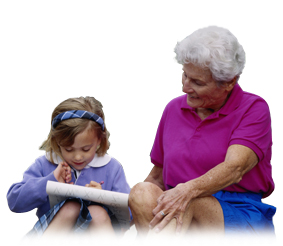Knee Pain SmartSiteTM | ||||||||||||||||||
Other causes of knee painAnterior knee painAnterior knee pain is pain in the front of the knee. This pain can come from different parts of the knee:
These problems often begin when the kneecap does not move properly and rubs against the lower part of the thigh bone. Anterior knee pain is more common in:
Anterior knee pain can be a dull, aching pain that people feel most often:
Symptoms may be worse when you do deep knee bends, go down stairs, run downhill, or stand up after sitting for a while. Stretching and strengthening the muscles on the back (hamstrings) and strengthening the front (quadriceps) of your upper leg will help.
Changing the way you exercise may help. Try these things:
Some other tips that may reduce your knee pain are:
BursitisBursitis is the swelling and irritation of a bursa. A bursa is a fluid-filled sac that acts as a cushion between muscles, tendons, and joints. Bursitis is usually a result of tendon overuse or changes in the way a joint moves. It can be caused by a change in activity level, such as training for a marathon or by being overweight. Your doctor will talk to you about strategies that can restore your normal activity. When you have bursitis of the knee, you may notice:
Tips to relieve bursitis pain:
Baker's cystA Baker's cyst is fluid collection at the back of your knee. This can be caused by swelling inside the knee. The swelling is caused by an increase in the fluid that lubricates the knee joint. This fluid is called synovial fluid. When pressure builds up from too much fluid, the fluid spreads to the back of the knee. With a Baker's cyst, there may be a painless or painful swelling behind the knee. The cyst may feel like a water-filled balloon. Sometimes, the cyst may break open (rupture), causing pain, swelling, and bruising on the back of the knee and calf. A Baker's cyst commonly occurs with:
Often, Baker's cysts do not need to be treated. Your provider can watch it over time. If the cyst is painful, treatment may be done to correct the problem that is causing it. Two possible causes of a Baker's cyst are arthritis or a meniscus tear. Usually the cyst is not removed because it can come back. But if you have a lot of symptoms, a surgeon can remove the cyst. The cyst usually comes back if the underlying condition that causes it is not treated. | ||||||||||||||||||
| ||||||||||||||||||
Review Date: 8/9/2018 Reviewed By: C. Benjamin Ma, MD, Professor, Chief, Sports Medicine and Shoulder Service, UCSF Department of Orthopaedic Surgery, San Francisco, CA. Also reviewed by David Zieve, MD, MHA, Medical Director, Brenda Conaway, Editorial Director, and the A.D.A.M. Editorial team. View References:  The information provided herein should not be used during any medical emergency or for the diagnosis or treatment of any medical condition. A licensed medical professional should be consulted for diagnosis and treatment of any and all medical conditions. Links to other sites are provided for information only -- they do not constitute endorsements of those other sites. No warranty of any kind, either expressed or implied, is made as to the accuracy, reliability, timeliness, or correctness of any translations made by a third-party service of the information provided herein into any other language. © 1997- A.D.A.M., a business unit of Ebix, Inc. Any duplication or distribution of the information contained herein is strictly prohibited. | ||||||||||||||||||
A.D.A.M. content is best viewed in IE9 or above, Firefox and Google Chrome browser. | ||||||||||||||||||












